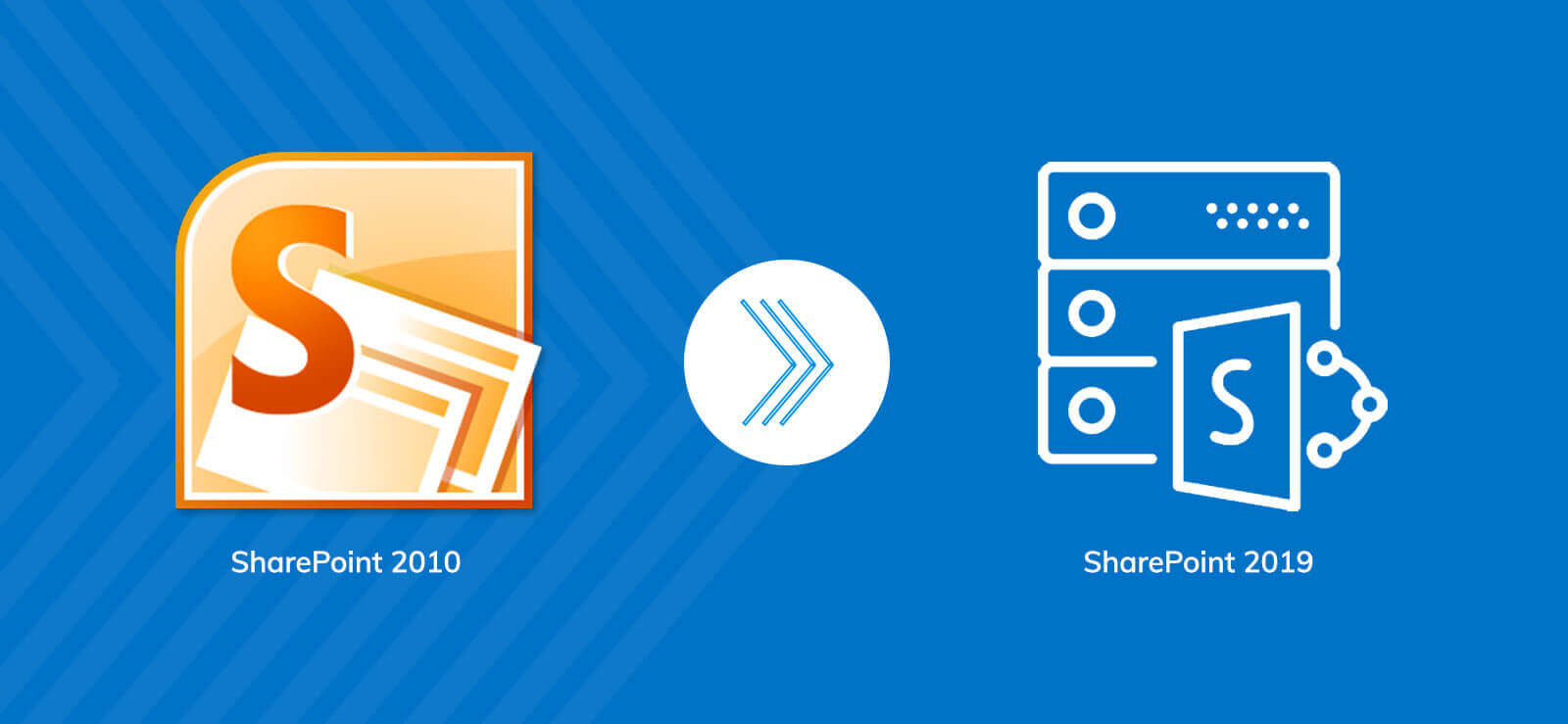Read time: 9 minutes
April 13, 2021, was the end-of-support date announced by Microsoft for SharePoint Server 2010. The term ‘end of support’ means Microsoft will no longer bring any updates to the particular version of the application. It is an indication to the user that they should upgrade to the latest version of the software. After the announced date, it will be the end of the lifecycle. However, it’s important to note that the software will still function, but Microsoft will no longer assist with any associated issues or updates.
Consequence of end of support
As Microsoft no longer supports SharePoint 2010, you’ll not receive any of the following:
- Technical support to fix issues within your SharePoint 2010 server.
- Regular updates and bug fixes to keep the software stable.
- Security patches to stop breaches and prevent SharePoint Server from being vulnerable.
- Time zone updates.
You won’t want your team to continue working with the same outdated tool to which you can’t even provide support if there’re any mishaps. Also, normal tasks like adding a user to SharePoint site might throw errors, and no fix will be provided for it. Therefore, it is better to adopt the change and proceed with the latest version of SharePoint.
Why migrate from SharePoint Server 2010 to SharePoint Server 2019?
If you are using SharePoint 2010, the window to receive Microsoft support has come to an end. Your natural reaction to the situation now might be to upgrade to the latest version of SharePoint Server 2019 and find a suitable method to do so. Also, the advanced features of SharePoint 2019 are worth upgrading your server. However, if you’ve done a careful review of Microsoft’s Upgrade and Updates documentation you will find out that there is no direct method to migrate from SharePoint Server 2010 to SharePoint Server 2019.
To accomplish your SharePoint 2019 migration plan, you will have to upgrade to SharePoint Server 2013, then to 2016, and then finally upgrade to 2019. The table shows the available options for you:
|
End of Support software |
SharePoint Server 2013 |
SharePoint Server 2016 |
|
SharePoint Server 2010 |
SharePoint Server 2013 (on-premises) |
SharePoint Online |
|
SharePoint Server 2013 hybrid with SharePoint Online |
SharePoint Server 2016 (on-premises) |
|
|
SharePoint Cloud Hybrid Search |
Migrating using SharePoint migration solution
As SharePoint Server 2019 is not available as a direct destination for the SharePoint Server 2010, a possible option in front of you is to use any professional software that supports all migrations irrespective of their versions. Among so many software available, Kernel Migration for SharePoint stands out as the most reliable choice.
The SharePoint migration tool gives you many additional features, like a variety of filter options and an easy scheduling option that will run the migration whenever you want to run it. You can transfer sites, subsites, lists, libraries, documents, metadata, etc. and can also migrate SharePoint site permissions. Additionally, we recommend creating a checklist for SharePoint migration to ensure a smooth flow of operations.
Let’s go through the process of migrating the SharePoint Server 2010 to the latest SharePoint Server 2019.
The tool adds two SharePoint servers as the source and destination, and you can do the migration as easily as the copy-paste process. So, let’s go through the process of migrating the SharePoint 2010 to SharePoint 2019.
Add SharePoint Server 2010 as the Source
Let’s begin by adding the source SharePoint site to the tool. Here are the steps to do so:
- Open the tool. In the Source pane right-click SharePoint (On-Premises/Online) and select Add New SharePoint Site option.
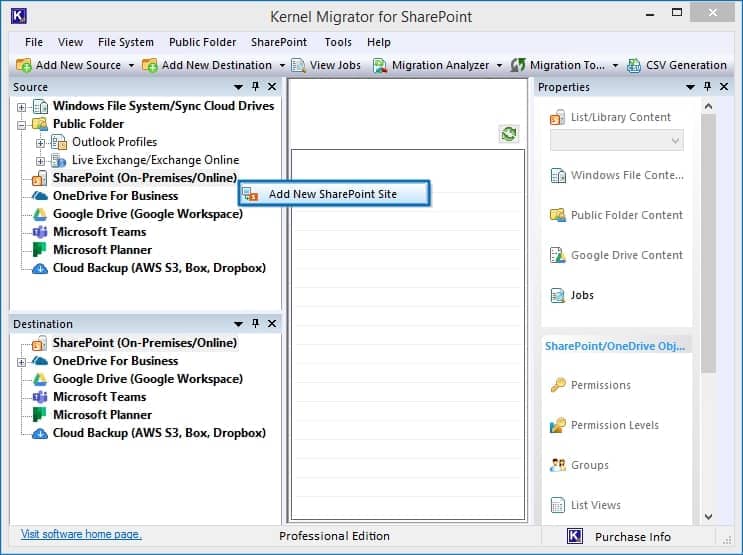
- Provide a project name. In the Connection type, you get two ways to login- Basic & Modern authentication. We recommend Modern authentication as it is more secure. Select Moder authentication option and fill in the required credentials.
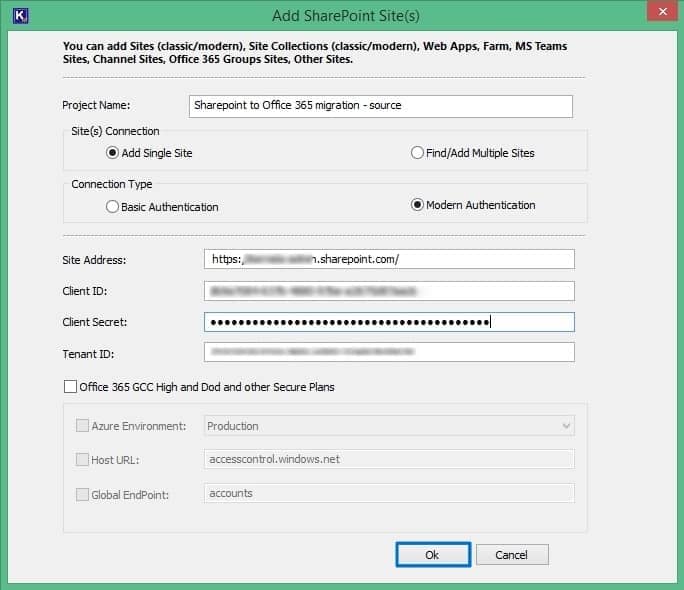
Note: In Site(s) Connection section by default Add Single Site is selected. To add multiple sites, click the Find /Add Multiple Sites button.
- A message will ask whether you want to add the SharePoint site as the destination also. Click No.
- The added SharePoint Server site will be shown in the source pane. Follow the similar process and add destination site in the Destination pane.
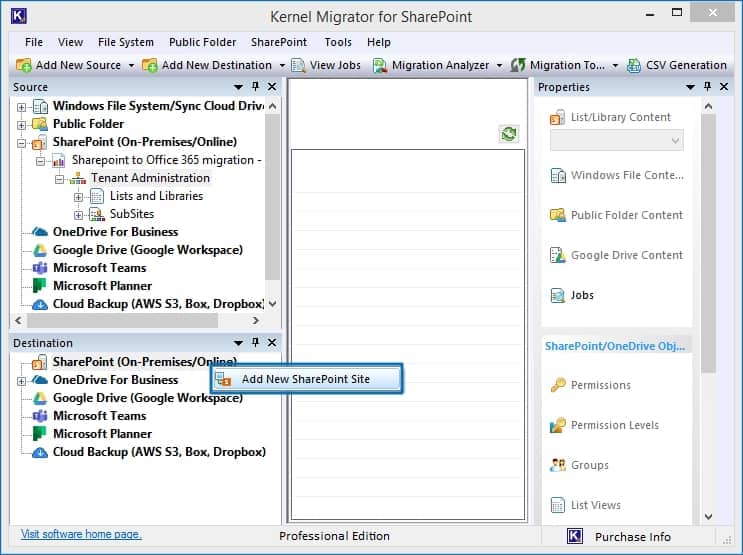
Migrate SharePoint 2010 to 2019
Once you add SharePoint Servers both in Source and Destination, you can use Copy To option to move data from SharePoint 2010 to SharePoint 2019. You can copy an unlimited amount of data at a time and migrate it to the desired destination. After you migrate the data, the tool will generate a report showing the status of the migrated data and their new URL.
- Right-click on the Source Site Collection and select Copy To.
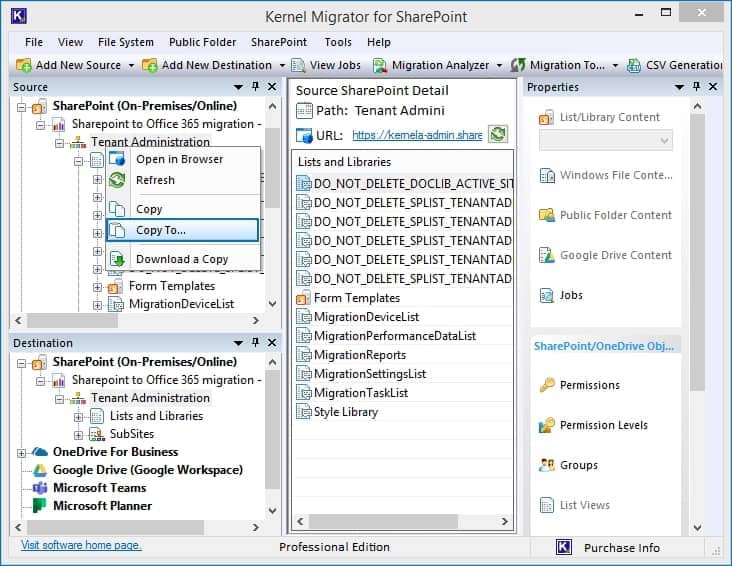
- This will open the Enter Source wizard, showing the Source Name, Source URL, and Source Type. To change the source, you can click Edit Source Selection. Once you have specified the source, click Next.
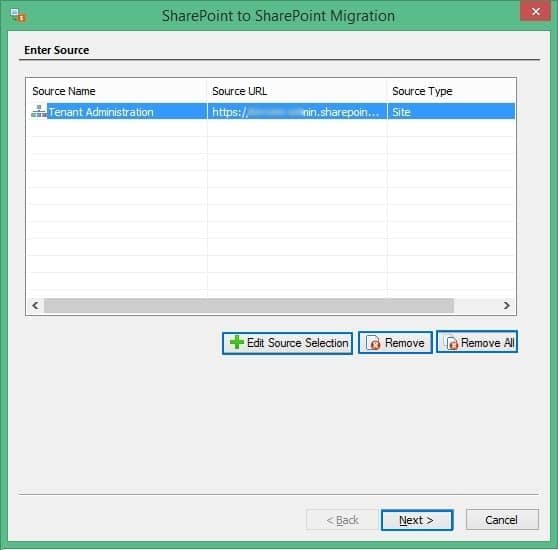
- There are three options for migrating to the site – Migrate as a new Active Site, Migrate as an existing site, or Migrate as a new subsite of existing target selected site. Choose any one and click Next.
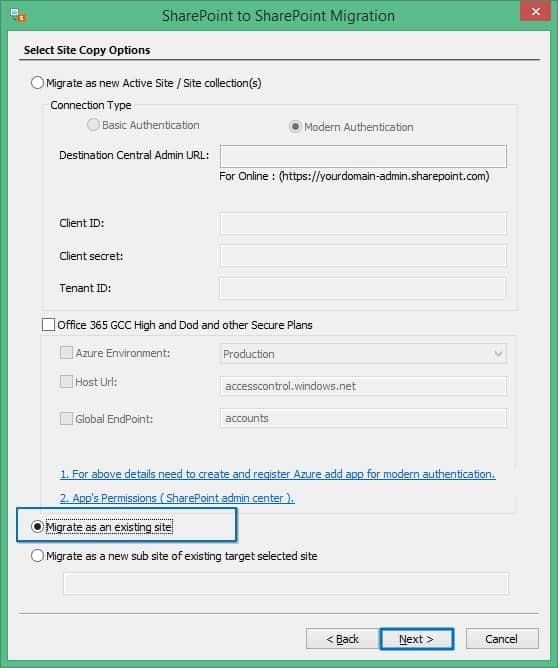
- Use the Site URL dropdown to choose the destination site and then click the Browse button to select the subsites. Once the destination subsite is selected, click Next to move ahead.
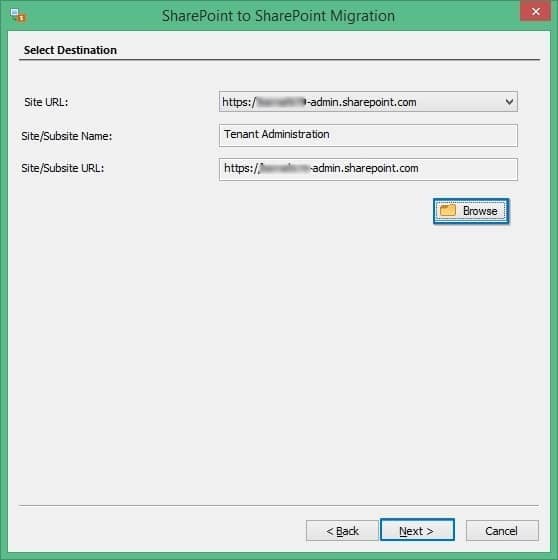
- In the next window, you can select several properties and attributes to migrate. Select the options you need and click Next.
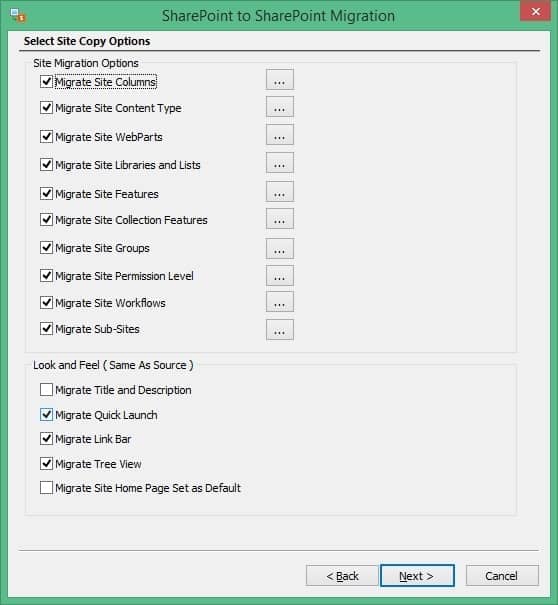
- Select the List/Library copy options and click Next.
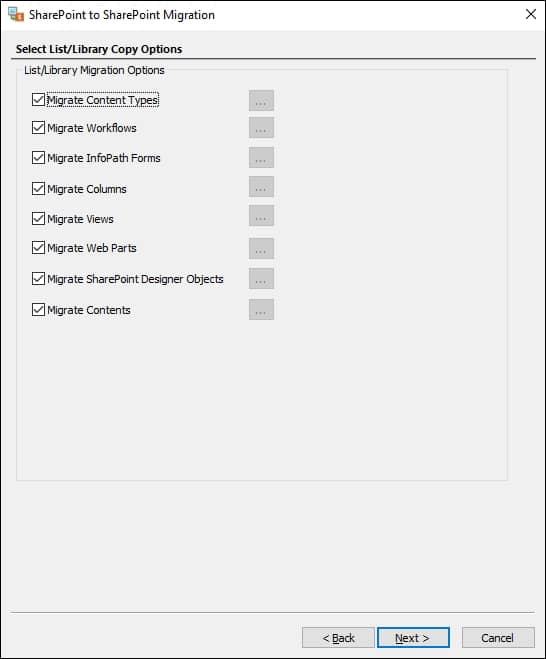
- After you have selected the properties, apply appropriate filters and click Next.
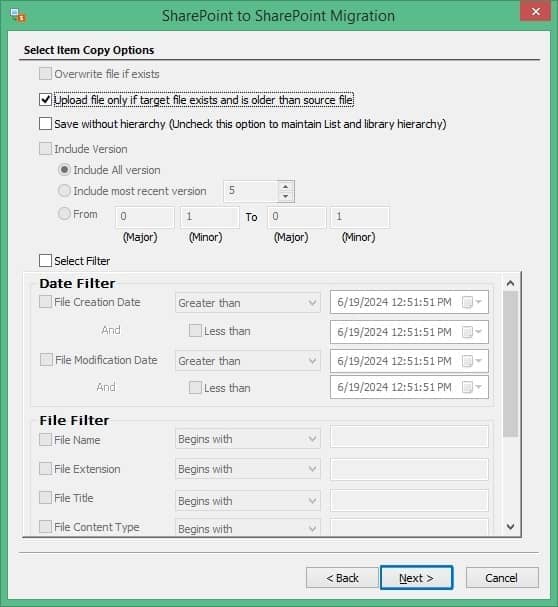
- If you want to migrate the site permissions along with data, then choose the option to Migrate Permissions and click Next.
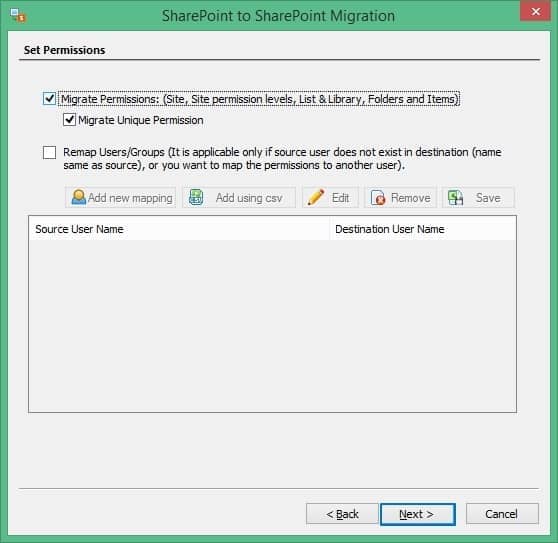
- You can schedule the migration for a later time or can begin immediately. Select Execute Immediate and click Next to start the migration now.
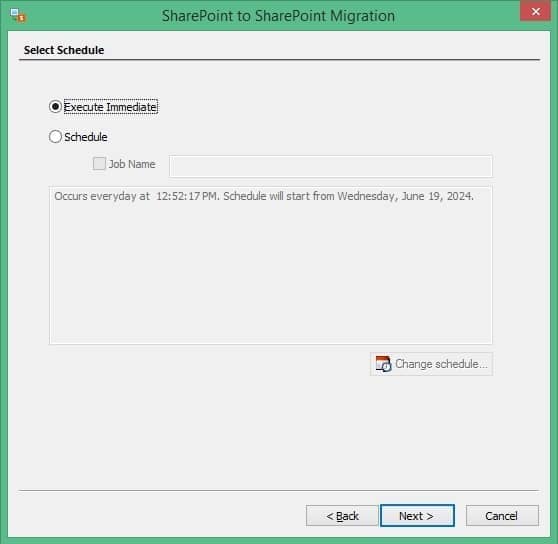
- A summary of the migration will be presented to you. Review it and click Next to start the migration.
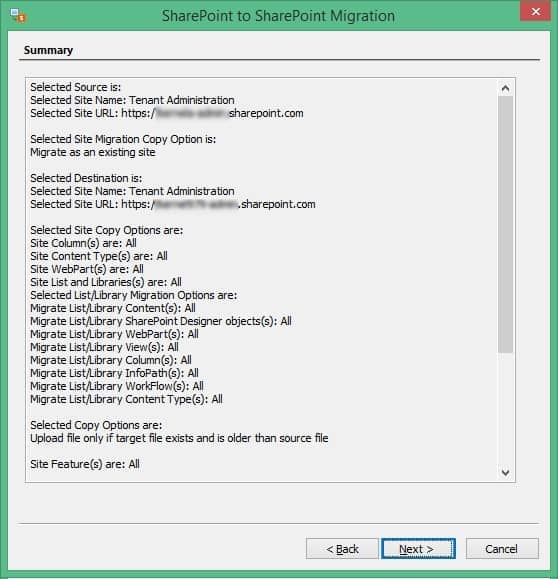
- Once the process is complete, you will receive a completion summary. Click Finish to exit the process.
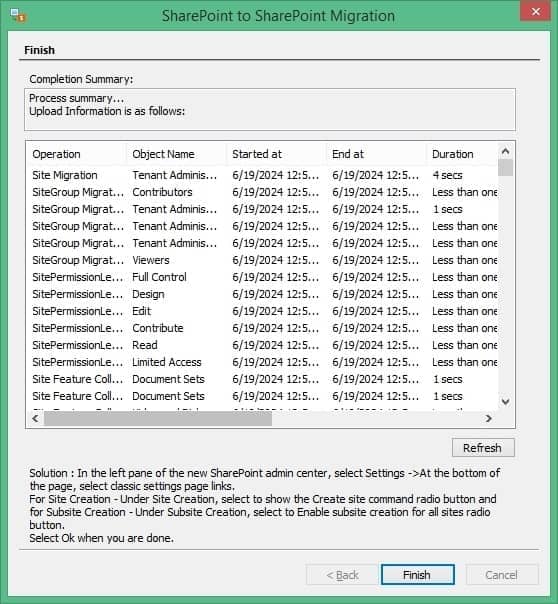
Using the above steps, you can easily migrate SharePoint site collections to SharePoint 2019. These simple steps make migrating from SharePoint 2010 to 2019 a hassle-free job that even a non-technical person can execute. Other complex jobs possible with the tool are:
- Migrate from SharePoint 2010 to 2013 and 2016.
- Perform SharePoint on-premises to SharePoint Online migration.
- Migrate SharePoint 2013 to 2019.
- The tool can also handle SharePoint migration to different tenants.
Conclusion
After reading this article, we understood that a direct transition from SharePoint 2010 to SharePoint 2019 is currently not available. It would be a waste of time and resources to migrate using intermediate SharePoint versions (2013 and 2016). Therefore, it is a wise decision to get Kernel Migration for SharePoint, a professional tool designed to execute upgrades or migration to the latest SharePoint version. The tool can even migrate SharePoint 2010 to SharePoint Online.






